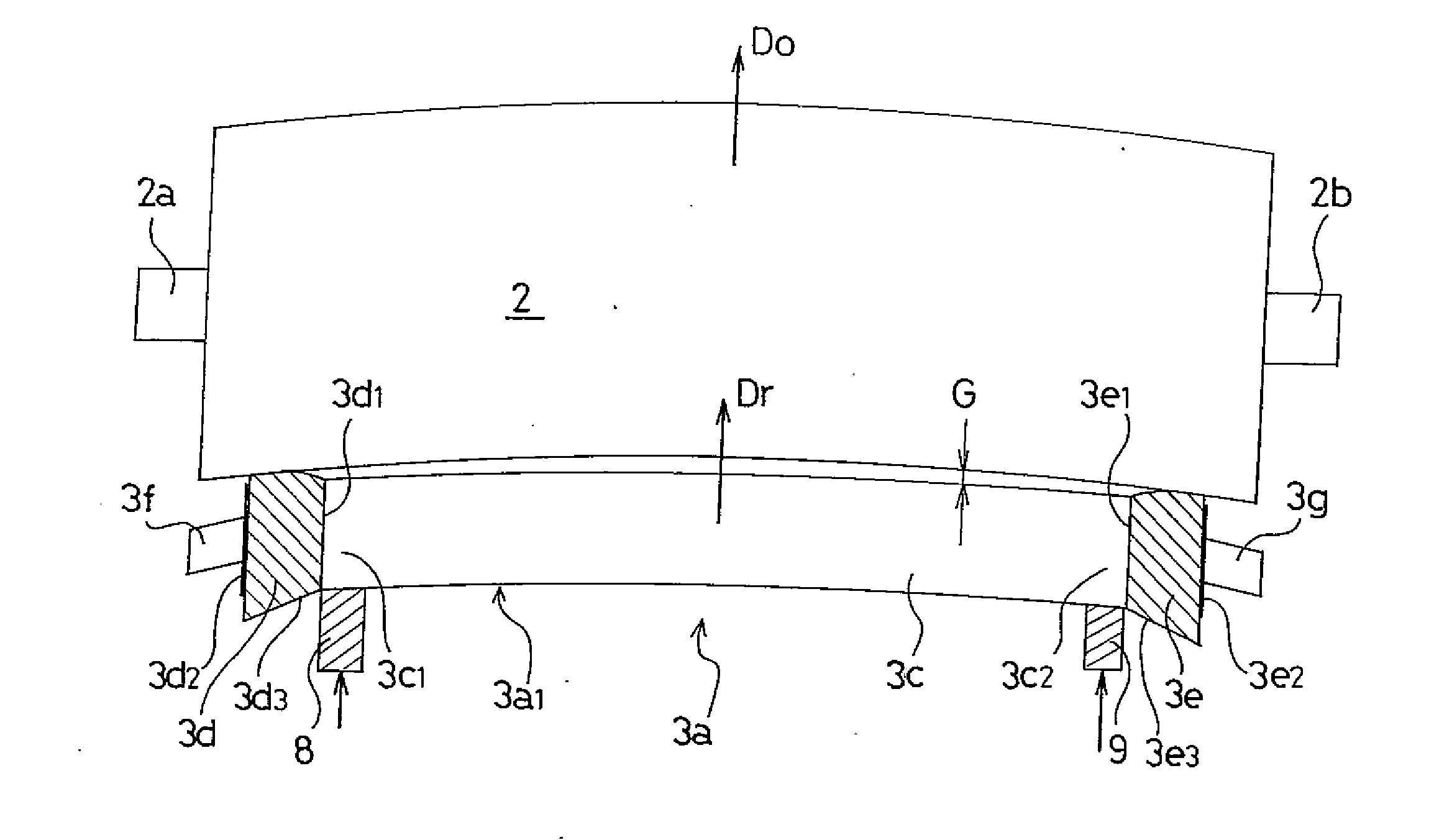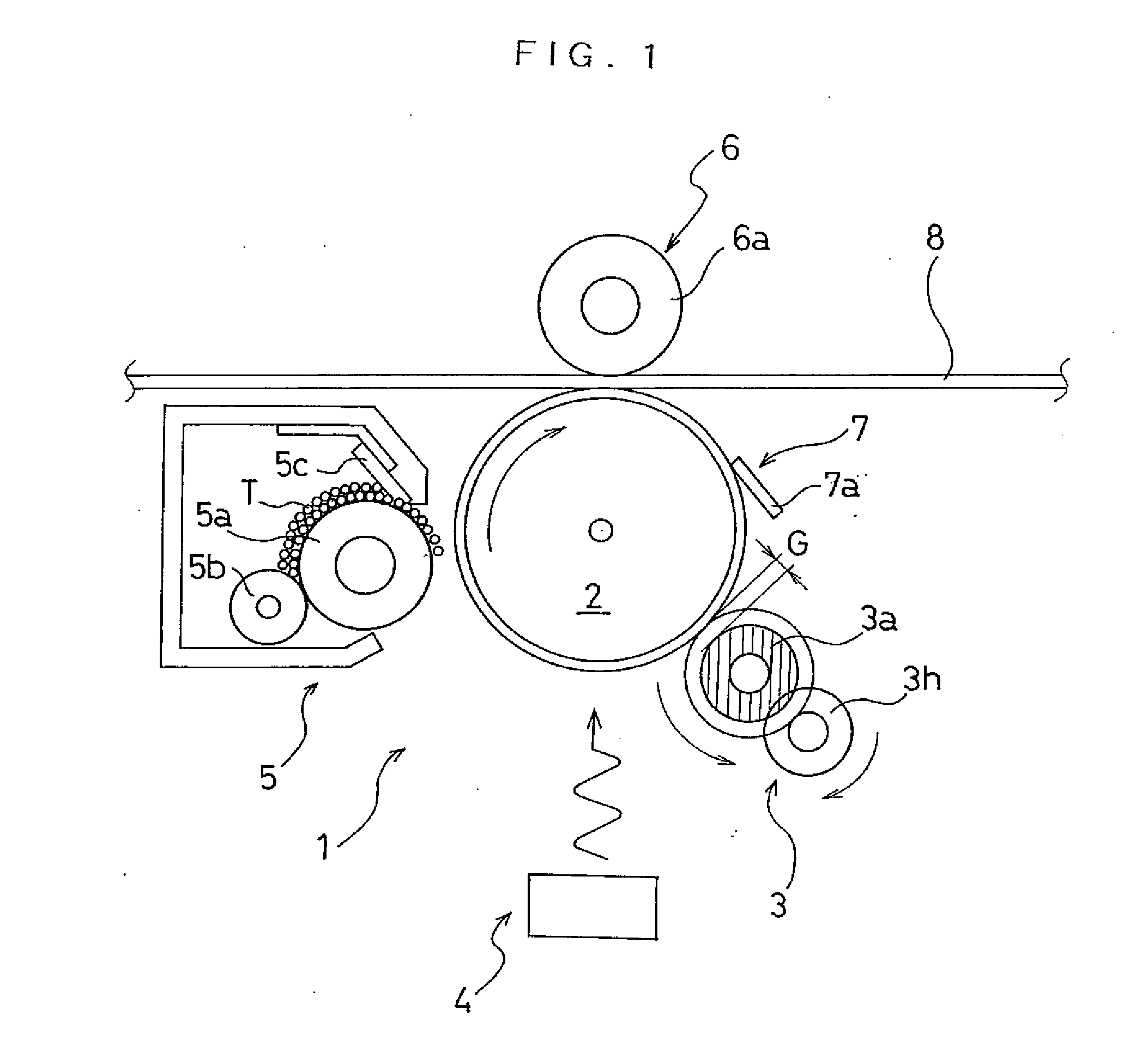Charging Roller and Image Forming Apparatus with the Same
a charging roller and image forming technology, applied in the direction of electrographic process apparatus, instruments, corona discharge, etc., can solve the problems of increasing the cost, deteriorating the productivity, and the inability to always obtain stable charging of the image carrier, so as to achieve effective space saving, stably forming the charge gap, and preventing the effect of unsticking the first and second gap members
- Summary
- Abstract
- Description
- Claims
- Application Information
AI Technical Summary
Benefits of technology
Problems solved by technology
Method used
Image
Examples
first embodiment
[0143]FIG. 1 is an illustration schematically and partially showing an image forming apparatus of a first embodiment according to the invention.
[0144] As shown in FIG. 1, the image forming apparatus 1 of this embodiment comprises a photoconductor 2 as an image carrier on which a electrostatic latent image and a toner image are formed and further comprises, in order of the rotational direction (clockwise direction as seen in FIG. 1) of the photoconductor 2 from the upstream, a charging device 3, an optical writing device 4, a developing device 5, a transfer device 6, and a cleaning device 7 which are arranged around the photoconductor 2.
[0145] The photoconductor 2 of this embodiment is composed of a photoconductive drum. Similarly to a conventionally known photoconductive drum, the photoconductor 2 comprises a cylindrical metal tube and a photoconductive layer having a predetermined film thickness covering the peripheral surface of the metal tube. As the metal tube of the photocondu...
fifth embodiment
[0204]FIG. 7 is an illustration schematically showing a photoconductor and a charging roller in an image forming apparatus of a fifth embodiment according to the invention.
[0205] As shown in FIG. 7, a charging roller 3a of the fifth embodiment A comprises a metal core 3b and a resistive layer 3c which is formed on the peripheral surface of the metal core 3b by spraying conductive coating material. On the resistive layer 3c, gap members 3d, 3e composed of electrical insulating tape-like film members are fixed to and wound into ring-like shape around the peripheral surfaces of both end portions of the resistive layer 3c. The charging roller 3a comprises rotary shafts 3f, 3g coaxially projecting from the both ends of the metal core 3b in the axial direction. The rotary shafts 3f, 3g are rotatably supported on the apparatus body by bearings.
[0206] The gap members 3d, 3e sets a predetermined charge gap G between the resistive layer 3c and the photoconductor 2 when pressed against the pe...
sixth embodiment
[0215]FIG. 8 is an illustration schematically showing a photoconductor and a charging roller in an image forming apparatus of a sixth embodiment according to the invention.
[0216] Though the pressing members 8, 9 are each of one-piece type in which the first pressing portion 8a, 9a for pressing the gap member 3d, 3e and the second pressing portion 8b, 9b for pressing the portion 3c1, 3c2 of the resistive layer 3c are integrally formed in the aforementioned image forming apparatus 1 of the fifth embodiment shown in FIG. 7, a pair of pressing members 8, 9 for pressing the end portions of the charging roller 3a are each of two-piece type in the image forming apparatus of the sixth embodiment as shown in FIG. 8.
[0217] That is, one pressing member 8 is composed of two pieces, that is, a first pressing member 8′ for pressing the gap member 3d and a second pressing member 8″, which is a separate member from the first pressing member 8, for pressing the portion 3c1 of the resistive layer 3c...
PUM
 Login to View More
Login to View More Abstract
Description
Claims
Application Information
 Login to View More
Login to View More - R&D
- Intellectual Property
- Life Sciences
- Materials
- Tech Scout
- Unparalleled Data Quality
- Higher Quality Content
- 60% Fewer Hallucinations
Browse by: Latest US Patents, China's latest patents, Technical Efficacy Thesaurus, Application Domain, Technology Topic, Popular Technical Reports.
© 2025 PatSnap. All rights reserved.Legal|Privacy policy|Modern Slavery Act Transparency Statement|Sitemap|About US| Contact US: help@patsnap.com



